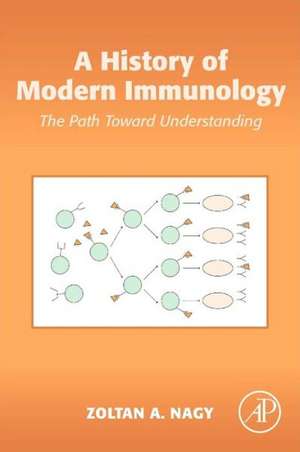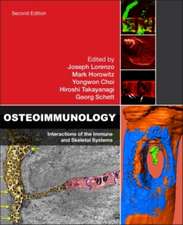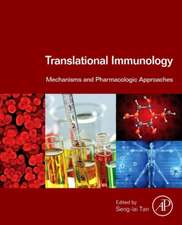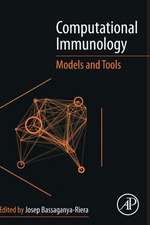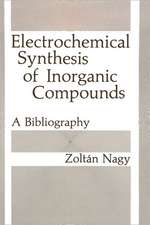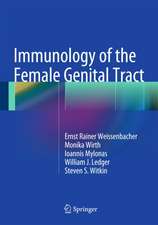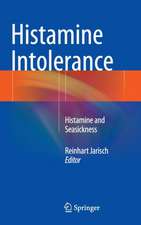A History of Modern Immunology: The Path Toward Understanding
Autor Zoltan A. Nagyen Limba Engleză Hardback – 5 dec 2013
This book provides a concise introduction to topics including immunological specificity, antibody diversity, monoclonal antibodies, major histocompatibility complex, antigen presentation, T cell biology, immunological tolerance, and autoimmune disease. This broad background of the discipline of immunology is a valuable companion for students of immunology, research and clinical immunologists, and research managers in the pharmaceutical and biotechnology industries.
- Contains the history of major breakthroughs in immunology featured with authenticity and insider details
- Gives an insight into personal aspects of the players in the history of immunology
- Enables the reader to recognize and select data of heuristic value which elucidate important facets of the immune system
- Provides good examples and guidelines for the recognition and selection of what is important for the exploration of the immune system
- Gives clear separation of descriptive and interpretive parts, allowing the reader to distinguish between facts and analysis provided by the author
Preț: 469.43 lei
Preț vechi: 667.55 lei
-30% Nou
Puncte Express: 704
Preț estimativ în valută:
89.85€ • 97.63$ • 75.53£
89.85€ • 97.63$ • 75.53£
Carte tipărită la comandă
Livrare economică 14-28 aprilie
Preluare comenzi: 021 569.72.76
Specificații
ISBN-13: 9780124169746
ISBN-10: 0124169740
Pagini: 356
Ilustrații: black & white tables, figures
Dimensiuni: 152 x 229 x 33 mm
Greutate: 1.18 kg
Editura: ELSEVIER SCIENCE
ISBN-10: 0124169740
Pagini: 356
Ilustrații: black & white tables, figures
Dimensiuni: 152 x 229 x 33 mm
Greutate: 1.18 kg
Editura: ELSEVIER SCIENCE
Cuprins
Introductory Words about Science, Scientists, and Immunology
Part One: Pre-History with Far-reaching Consequences
1 The immunological revolution
Part Two: The History
2 A very special location: the basel institute for immunology
3 Immunological specificity
4 Monoclonal antibodies: the final proof for clonal selection
5 The first victory of molecular biology: mechanisms of the generation of antibody diversity
6 The major histocompatibility complex
7 Antigen processing and presentation
8 The intricate behaviour of t cells
9 Acquired immunological tolerance
10 Autoimmunity
Concluding Remarks
Part One: Pre-History with Far-reaching Consequences
1 The immunological revolution
Part Two: The History
2 A very special location: the basel institute for immunology
3 Immunological specificity
4 Monoclonal antibodies: the final proof for clonal selection
5 The first victory of molecular biology: mechanisms of the generation of antibody diversity
6 The major histocompatibility complex
7 Antigen processing and presentation
8 The intricate behaviour of t cells
9 Acquired immunological tolerance
10 Autoimmunity
Concluding Remarks
Recenzii
"...lively in part because, at its core, it recognizes the human and subjective side of doing science...constitutes an enthusiastic and warm account of immunological progress...The human engagement in his account makes the scientific issues more understandable, their significance more apparent and fascinating." --Journal of the History of Biology, A History of Modern Immunology
"…introduces each of the ten sections with some level of background or historical context, beginning with the discovery of DNA rearrangement in the generation of antibody diversity and finishing with the concepts of immune tolerance and autoimmunity…also explains the significance of specific experiments. Summing Up: Recommended." --Choice, July 2014
"An immunology industry insider surveys the recent history of the branch of life sciences that studies immune system functions and summarizes major discoveries resulting from immunological research conducted since 1970. The chronicle describes the clarification of immunoglobulin structure, the interaction of antibody with antigen, the mechanisms for generation of antibody diversity, the T-cell antigen receptor, and the nature of its ligand.." --ProtoView.com, January 2014
"…introduces each of the ten sections with some level of background or historical context, beginning with the discovery of DNA rearrangement in the generation of antibody diversity and finishing with the concepts of immune tolerance and autoimmunity…also explains the significance of specific experiments. Summing Up: Recommended." --Choice, July 2014
"An immunology industry insider surveys the recent history of the branch of life sciences that studies immune system functions and summarizes major discoveries resulting from immunological research conducted since 1970. The chronicle describes the clarification of immunoglobulin structure, the interaction of antibody with antigen, the mechanisms for generation of antibody diversity, the T-cell antigen receptor, and the nature of its ligand.." --ProtoView.com, January 2014
